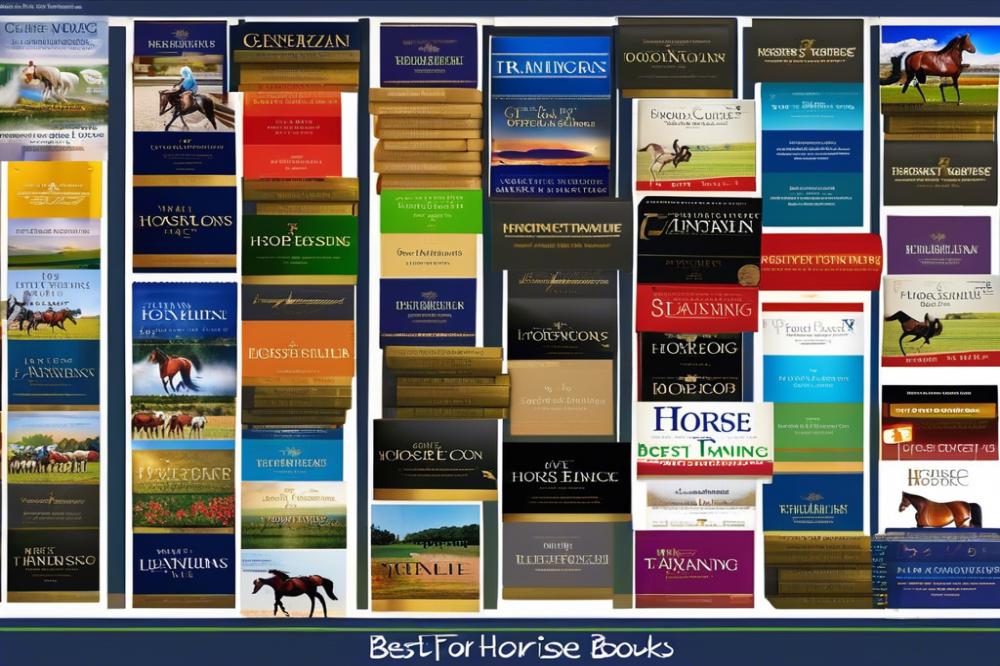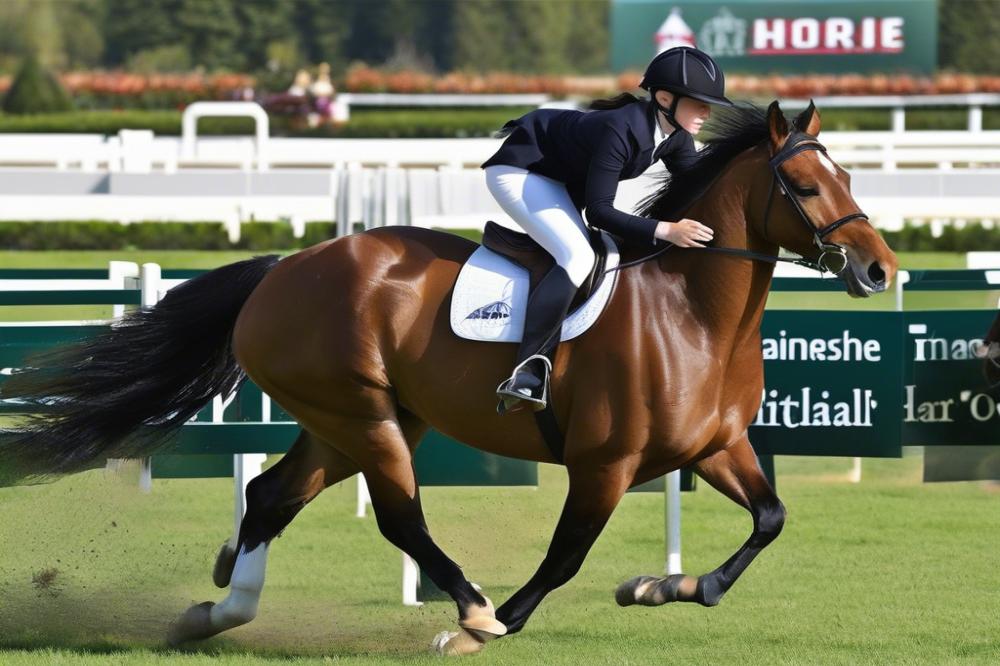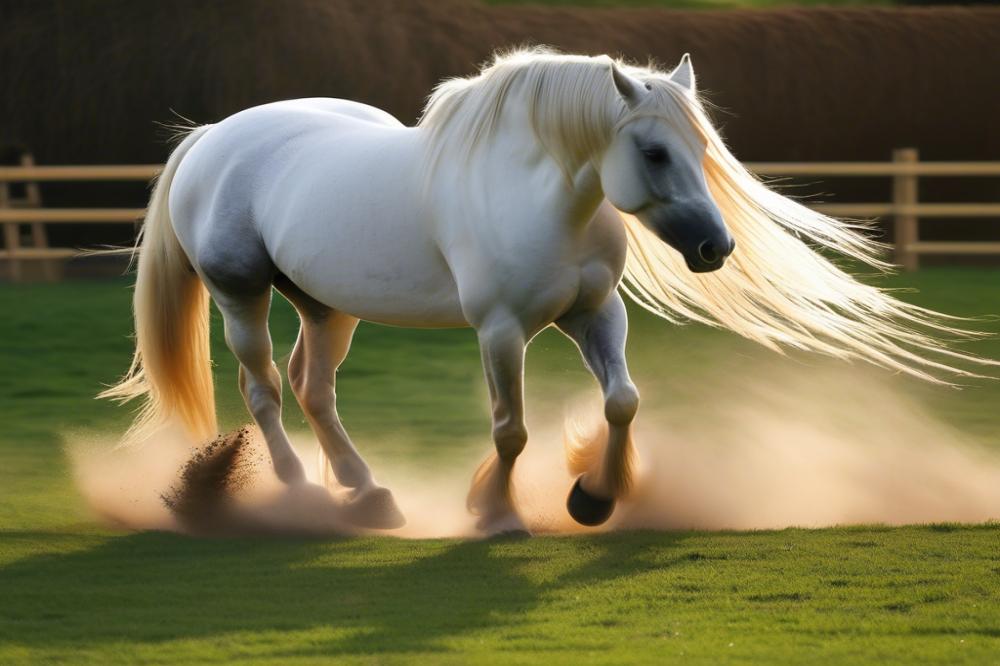Understanding the World of Horse Training
Training a horse is like building a bridge between two worlds. On one side, you have the rider, full of hopes and dreams. On the other, the horse, a magnificent creature with its own instincts and feelings. When that connection is made through training, something magical happens.
The journey of horse care doesn’t just revolve around grooming or feeding. It’s about understanding how horses think and communicate. A well-trained horse can become a loyal partner, capable of amazing feats. However, that partnership requires effort, patience, and knowledge. This is where reading becomes an invaluable tool. Engaging with quality horse books allows enthusiasts, whether beginners or seasoned riders, to deepen their understanding of both training techniques and equestrian learning.
Have you ever been confused about how to approach a particular behavior in your horse? Picking up a book can give you insight that might lead you to the answer. Imagine finding out why your horse spooks at a simple shadow—well, it might be due to a lack of trust or understanding. The right reading materials can shed light on these mysteries, guiding your training practices in ways you might never have thought of.
This article aims to highlight some of the best and most useful resources available for aspiring trainers and seasoned equestrians alike. We’ll share insights into why these books are must-haves for anyone who loves horses. Want to know if a horse is faster than a car? It’s a fun debate, but the real question is how well you’ve trained that horse to follow your cues! Whether you’re using equestrian products from local shops or simply browsing online, a good book can be as crucial as having the best truck for hauling horses.
Understanding Horse Training

Definition of Horse Training
Horse training refers to the process of teaching a horse specific skills or behaviors. It involves teaching animals to respond to cues from a rider or handler. Think of it like learning a new sport; just like humans, horses benefit from practice and guidance. Over time, they learn how to behave and perform tasks effectively.
Different Approaches to Horse Training
Various methods exist for training horses. Some trainers focus on natural horsemanship, which emphasizes understanding the horse’s instincts and body language. Others may lean towards more traditional techniques that use pressure and release. Techniques vary widely, just like swimming styles or cooking recipes. Regardless of the method, every trainer has their own way of doing things.
Communication plays a key role here. Trainers must convey their intentions clearly. Some might use positive reinforcement, rewarding the horse for desirable actions. Others rely on negative reinforcement to teach lessons. Readers can find these different approaches in equestrian literature, which provides insight and tips.
Purpose and Goals of Training
Training serves multiple purposes. The primary goal is to teach a horse to obey commands. Well-trained horses are typically safer and more enjoyable to ride. Additionally, training can enhance the bond between rider and horse, creating a deeper connection. Riders often seek to improve performance for competitions or leisure riding.
Benefits of proper training extend beyond the barn. Happy, responsive animals can make challenging situations easier. Horse care also comes into play. Knowledge of equestrian products, saddles, and gear becomes essential. With solid training, horses become more adaptable and skilled, which helps everyone involved.
In summary, understanding horse training is crucial for anyone involved in the world of horses. Whether you’re exploring horse books or attending clinics, the journey of training is rewarding. Keep it light, and remember: every horse has its own story. They may not always listen, but trust and patience can go a long way.
Criteria for Selecting Horse Training Books

When diving into the world of horse training, it’s crucial to choose the right reading materials. Not all books are created equal. Several factors can make a difference in which book is best for you and your horse. Let’s break down some key points to consider.
Author Credentials and Expertise
The credentials of an author can make or break a book’s value. Ask yourself, “Who wrote this?” Many authors have extensive experience in horse care and equestrian learning. Some might be trainers, while others could be accomplished riders or veterinarians. Their backgrounds can provide insights into the effectiveness of their methods. The more qualified the author, the more likely they offer reliable information.
Types of Training Methods Covered
Different horses require different approaches. Every horse book offers a unique angle on training. Some focus on traditional techniques, while others explore modern practices. It’s wise to know what training methods are included. Effective strategies can differ greatly depending on a horse’s temperament and personality. Finding a book that resonates with your style can be a game-changer.
Reader Reviews and Ratings
Don’t overlook what others have to say! Reader reviews often reflect the true value of horse books. A book might look good on the cover, but its content could fall short. Look for honest feedback. Comments from fellow horse enthusiasts can help guide your choice. If a book has five-star ratings and glowing reviews, it’s worth considering.
On the other hand, a book with significant complaints may be best left on the shelf. Reader feedback can unveil hidden gems or warn you away from trouble. Think of these reviews as the grapevine of equestrian products—you want the scoop from people who’ve walked the walk and ridden the ride.
Top Recommended Horse Training Books

Finding the right resources for horse care and training can feel like searching for a needle in a haystack. Fortunately, there are some standout books in equestrian literature that can make this journey much easier. Below, you’ll discover a list of popular titles packed with valuable information and practical tips.
The Complete Guide to Horse Training by John Richards
This book stands out for its straightforward approach. Readers can expect a step-by-step guide that simplifies training techniques. From groundwork to riding, this resource covers it all. Key concepts include establishing a strong bond with your horse and mastering basic commands. It emphasizes patience and consistency, crucial elements for any horse owner.
Understanding Horse Behavior by Dr. Sarah Evans
Understanding your horse is essential for successful training. Dr. Evans dives deep into the mind of horses, offering insights into their behavior. This book helps you interpret your horse’s actions and reactions. With this knowledge, trainers can tailor their methods effectively. The author shares real-life examples, making the information relatable and engaging.
Training in the Moment: A Focused Approach by Lisa Harrington
Many trainers admire this book for its practical tips on mindful training. It encourages readers to focus on the moment during each session. Techniques involve emphasizing positive reinforcement and clear communication. Lisa Harrington’s way of explaining things can help improve timing and connection between trainer and horse.
Siegi and Shultz on the Basics of Riding by Siegi Schmid
With insights from an experienced equestrian, this book provides a creative take on riding fundamentals. It emphasizes the importance of proper balance and posture. Readers will learn how the basics create a strong foundation for advanced skills. Humor and anecdotes pepper the chapters, making it an enjoyable read for all levels.
Groundwork Training for Horses by Jack Turner
Groundwork is quite often overlooked but is essential for successful riding. Jack Turner illustrates key exercises that build trust and respect. Step-by-step instructions make it easy for beginners to follow along. By starting on the ground, horse and trainer can establish a respectful relationship. This practice lays the groundwork for future riding adventures.
The Art of Equitation by Rebecca Lane
Lane’s book is a favorite among equestrian learners who wish to refine their riding skills. It focuses on posture, positioning, and presentation. This one stresses the art of feeling at one with the horse, and that makes all the difference. With visuals and detailed explanations, it’s both an informative and enjoyable read.
Ultimately, these horse books contain treasures of knowledge for any horse enthusiast. Investing time in these reading materials can lead to greater success in training and nurturing a love for horses. Whether seasoned trainers or novices, each reader will find valuable nuggets of wisdom within these pages.
Specialized Horse Training Books
Focused on Specific Disciplines
When it comes to training horses, not all paths lead to the same destination. Different disciplines require different techniques, and that’s where specialized equestrian literature comes into play. For dressage enthusiasts, books like “Dressage for the Not-So-Perfect Horse” provide insights into creating harmony between rider and horse. Jumping fans will find “The Art of Jumping” full of strategies for mastering that perfect leap. Western riding also has its champions; “Understanding the Western Horse” offers a playful yet informative look at the unique techniques within that discipline.
Books Addressing Specific Issues
Not every horse is a picture of perfection. Sometimes, there are bumps along the road, like behavioral problems. “Dealing with Difficult Horses” serves as a lifeline for anyone facing tantrums or stubbornness. Groundwork is often an overlooked foundation, but books like “Groundwork for Every Horse” emphasize its importance. Each chapter feels like a friendly chat with an experienced trainer who just wants to help. These reading materials guide owners through challenges with care and understanding.
Overview of Books for Different Breeds
Every horse is a bit like its owner, filled with quirks and personality. Breed-specific books cater to those quirks expertly. Arabians have their charm, and “Understanding the Arabian Horse” dives deep into their unique traits. The book walks readers through specialized care and training tailored just for them. For those who adore thoroughbreds, “Racing Height: Training Thoroughbreds” connects the sport with training methods that suit their speed. Belgian draft horses also get their spotlight with “Caring for Your Belgian,” showcasing how best to meet their needs.
In the world of equestrian products, one size does not fit all! Whether seeking solutions for stubbornness, groundwork techniques, or insights for specific breeds, there’s a wealth of knowledge in the realm of horse books waiting to be explored. With each turn of the page, a fresh perspective may lie in wait, ready to help every aspiring horse trainer connect with their beloved companion.
Integrating Book Knowledge into Practical Training
Turning theory into practice can feel like a tall order. Many horse enthusiasts dive into equestrian literature and feel overwhelmed when it’s time to apply what they’ve learned. Don’t worry! With some thoughtful strategies, those lessons from horse books can truly shine during training sessions.
Tips on Applying Lessons Learned from Books
Begin with small steps. Pick one concept from your reading and focus on that during your next session. For example, if a chapter discusses groundwork, apply just one technique. Trying to do too much at once can make things chaotic. Asking a trusted friend to join you can be helpful. They can observe your practice and offer fresh insights.
Use your reading materials as a reference guide. Keep a notebook handy to jot down key points you want to remember. Looking back at notes while in the saddle can spark reminders. Horses are great listeners, but they can’t read your mind! Speaking clearly with them and being consistent in your commands will help both of you understand each other better.
Common Pitfalls to Avoid When Transitioning from Theory to Practice
One common pitfall is expecting instant results. Training takes time, and it’s easy to get discouraged if things don’t click right away. Remember, even the best trainers started somewhere! If you find yourself getting frustrated, it might be a good idea to take a break. Sometimes, a little distance can offer a fresh perspective.
Another pitfall is neglecting the horse’s feelings. Reading about techniques is one thing, but understanding your horse’s emotions is quite another. Each horse has its own personality. Some love new challenges; others prefer routine. Pay attention to your horse’s reactions and be flexible in your approach. Equestrian products aren’t just tools; they also reflect your horse’s comfort and readiness.
The Importance of Patience and Consistency
Patience truly is a virtue in horse training. Change won’t happen overnight. It can feel like watching paint dry at times! But every little achievement counts. Celebrate the small victories. Maybe your horse takes an extra step in a new exercise. That’s progress! Plus, consistency builds trust. If you repeat the same commands and use the same cues, your horse will start to recognize what you want. That teamwork feels rewarding.
Being consistent also includes how you handle training sessions. Try to keep them regular. Short, frequent sessions are often better than one long practice. Horses learn best in environments where they feel safe and supported. Show them you care, and they’ll be more willing to learn. Remember, the journey of equestrian learning is just as important as the destination.
Additional Resources for Horse Training
Learning about horse training goes beyond just picking up a few horse books. There are a ton of other resources out there that can really make a difference in your journey. Have you ever tried watching videos? They can be fantastic for seeing techniques in action. YouTube is packed with amazing training tutorials. You can watch experts work with horses and get tips that could help you. Plus, they can let you see how to handle different training scenarios up close.
Workshops are another great way to learn. Imagine spending a day with a seasoned trainer, soaking up knowledge while working with real horses. It’s hands-on experience that you just can’t get from reading alone. Many riding clubs host these events, and they can be a blast. You’ll not only learn a lot but also meet fellow horse lovers who share your interests.
Community Resources
Don’t underestimate the power of your local community. Nearby riding clubs often have members who are seasoned trainers ready to share their wisdom. Joining a club can feel like having a second family, all focused on the same passion. They offer a great atmosphere to practice and exchange ideas about equestrian learning. You can even find a mentor who is eager to help you grow.
Another option is to look for personal trainers in your area. A one-on-one session can address your specific questions. Sometimes, a skilled coach can spot issues in your technique that you might miss. They provide tailored advice that is simply invaluable. Learning directly from someone rather than just through equestrian literature can speed up your growth.
The Importance of Mentorship and Guidance
Having a mentor can be like having a treasure map in the world of horse training. They can guide you through the twists and turns that come with learning to ride and train. Finding someone who has been through the wringer can save you from some serious headaches down the road. Experience is a great teacher, and mentors have been there, done that, and learned from it.
Don’t forget about the joy of sharing your journey with others. A few hours spent talking to someone who shares your passion can often inspire new ideas. Be open to discussions; you never know what nugget of wisdom might come your way. Reading materials are great, but their insights can really come alive when discussed with others.
In summary, look beyond just books to fuel your passion for horse training. Videos, workshops, and community events can bring fresh perspectives and valuable techniques. Remember, every expert was once a beginner, so don’t be shy. Dive in, engage, and enjoy all the amazing resources out there. You might just find your new favorite way to learn about horse care or try out some new equestrian products.
Wrapping It Up
We’ve taken a journey through the world of horse training books, and what a ride it’s been! These resources provide more than just techniques; they offer insights into the bond between humans and horses. Every page flipped can open a door to new understanding and skills that every horse owner cherishes. The wisdom found within these pages can transform both your training methods and your relationship with your horse.
Exploring various resources is key to shaping effective training practices. Online forums, videos, and workshops can all complement the knowledge gained from books. Don’t be shy; dive into different materials! Each resource can uncover a new nugget of wisdom or a fresh perspective. Much like the way a horse navigates a winding trail, it’s vital to explore various paths to find what works best for you and your equine partner. If you’re looking for answers to questions like, “do horses love humans”, training literature often provides heartwarming insights.
Think of learning as a never-ending rodeo. Just when you think you’ve mastered a skill, there’s always something new to learn. Whether it’s perfecting your riding stance or understanding horse psychology, there’s always room for growth. The journey of training a horse could even be likened to comparing a horse to a moose; both have unique needs and personalities, but the approach to understanding them can differ greatly.
So, saddle up and get ready to explore! With dedication, patience, and the help of these valuable resources, you can forge a stronger bond with your horse. Each lesson learned is a step toward becoming the best partner you can be in this incredible journey. Keep your curiosity alive! Who knows what treasures you’ll uncover next?



